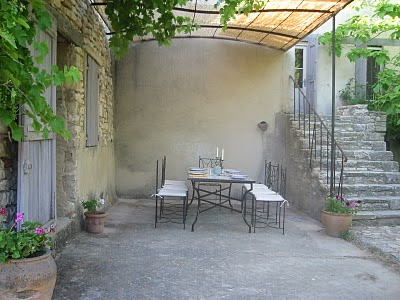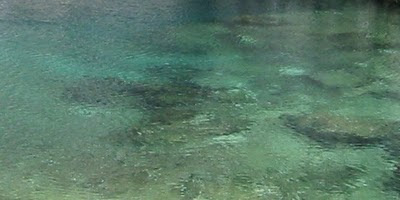Inside and out, pools of light burned from hurricane lamps, candelabras, chandeliers, tea lights, and the rusty lantern we found in a garden storeroom and used on the dining table on the terrace.
From The Lantern
The stage is set, the atmosphere suspended somewhere between serene and lonely. The table awaits our guests, for the food to emerge from the kitchen and be brought down the steps, for the wine and conversation to flow.
Here are the bare bones of the evening, or the calm before the storm, actually, because what happens around this table (and even more so when the extension table is added) frankly isn’t dainty. It’s usually a glorious free for all with a lot of belly laughter, and a certain amount of hilarity at well-remembered stories. We love having family and lots of old friends to stay during the long, hot summer, and now there are all our children – some the same age as we all were when we first met.
As night falls, the candles will be lit and placed in lanterns and jam jars. In the courtyard, glass yoghurt pots wired and hung in the olive and fig trees hold flickering gold flames. At some point my husband Rob will slip away into his music room – the door on the left – and start playing the piano. The teenagers will drift down through the dark garden to the pool with their own music, switch on the underwater lights, and dance in glowing turquoise water.
Which is all a rambling way of saying that I’m acutely aware that this blog is only at the scene-setting stage. I’m setting out the pictures and there is a certain anticipation, but the action hasn’t started yet. I’d like to hand you a drink and tell you a story, introduce you to some people I’m hoping you’ll get along with; but all I can do right now is show you around a little and try to put you at your ease. I can’t tell you how delighted I am to have made the acquaintance of so many lovely, like-minded people in such a short time.
Some of my posts might seem to have nothing to do with writing, or books, but they are all relevant in their way to one book. I’m hoping that when The Lantern is published, those who have enjoyed reading it will come here and sift through the archive to see what certain places really look like, and whether the pictures in their mind were anything like the ones I saw in mine when I wrote it.
Sooner or later, I’ll want to discuss the sense of smell; lavender and the production of essential oils; to take you to Manosque and the great lavender-growing plateau of Valensole; to wonder about the existence (or not) of a sixth sense and the vivid inner life of a reader; about the unquiet history of old houses.
But all this could be dangerous. Because you are such intelligent, artistic, imaginative visitors and the novel that you are half-creating in your minds as you look at my pictures may well be far better than the one I’ve written. Yet if that’s the case, all well and good: use it. Write your books, and tell me about them, and we can all raise a glass to creative endeavour.














